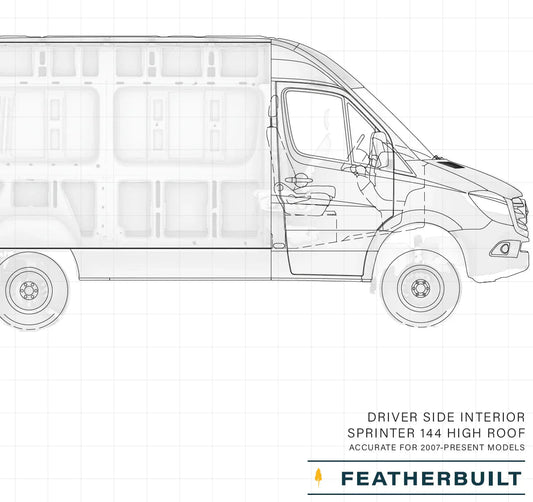
Off-Grid Power Estimate for Your Van Conversion
Patrick Beseda🔋 Off-Grid Power Estimate for Your Van Conversion
Because running out of juice halfway through cooking dinner isn’t the dream.
Let’s be honest: nothing kills the vibe like realizing your fridge is dead and your phone charger’s just a useless cable.
When you’re living (or weekending) off-grid, your power setup matters—a lot. But you don’t need a degree in electrical engineering or a 14-tab spreadsheet to figure it out. You just need to know what you’ll actually use, how often, and what kind of system fits your setup.
We’ll walk you through the process step by step, calculator-optional.
Understanding Your Power Needs
If you can make a grocery list, you can estimate your van’s power consumption.
Here’s the basic process:
-
List every device or appliance you’ll be using.
Think: lights, fridge, fan, phone charger, laptop, blender (no judgment), heater, etc.
-
Find the power rating for each (in watts).
This is usually on a label or the manufacturer’s site. If it’s in amps, don’t panic—we’ll convert it.
-
Estimate daily usage in hours.
Not how long the device could be on—how long you’ll actually use it each day.
-
Multiply watts × hours to get watt-hours per day.
(Or amps × volts if you’re going that route—most van systems are 12V.)
-
Add it all up.
That’s how much power you’ll burn in a typical 24-hour period.
Now let’s plug in some real numbers.
What Daily Van Power Use Actually Looks Like
Here’s a Featherbuilt-style daily load for a cozy, off-grid setup:
| Device | Watts | Daily Use (hrs) | Watt-Hours |
|---|---|---|---|
| Fridge | 45 | 24 | 1080 |
| LED Lights | 15 | 4 | 60 |
| Ceiling Fan | 30 | 6 | 180 |
| Phone Charger | 10 | 2 | 20 |
| Laptop | 60 | 2 | 120 |
| Water Pump | 60 | 0.2 (12 mins) | 12 |
Estimated Total: 1,472 watt-hours per day (or ~123 amp-hours at 12V)
That’s your target. Your battery bank needs to cover this, with a buffer for cloudy days, movie marathons, or forgetfulness.
Pro tip: Don’t design your entire system based on the worst day, but do give yourself some headroom. Batteries like a little breathing room—kind of like you after your second espresso.
Three Ways to Keep Your Batteries Happy
Reliable power isn’t about one magical source—it’s about a smart combo. Here’s how most folks set it up:
☀️ Solar Panels (Your MVP)
- Best for: Stationary camping, summer trips, desert dwellers.
- Pros: Clean, quiet, and works while you nap.
- Cons: Clouds and trees exist.
- Tip: 200–400W is a great sweet spot for most builds.
Mount them to your roof, wire them to a charge controller, and let the sun do its thing. Bonus points for tilt mounts if you like to nerd out on angles.
🚐 Alternator Charging (AKA: Charge While You Drive)
- Best for: Daily drivers or road-trippers who move a lot.
- Pros: Charges fast, doesn’t care about the weather.
- Cons: Doesn’t help when parked.
- Tip: Pair with a DC-DC charger for safe charging and battery health.
If you’re driving every day, alternator charging can do a lot of the heavy lifting—just make sure you’re using the right hardware and wiring.
🔌 Shore Power (The Back-Up Plan)
- Best for: Home base charging or campgrounds.
- Pros: Reliable, fast, and doesn’t drain your gas tank.
- Cons: You need to be near a plug.
- Tip: Install a shore power inlet and connect it to your inverter/charger or battery charger.
Perfect for topping off before a big trip—or recharging after using your blender and the induction cooktop like a culinary hero.
Keep It Simple, Keep It Reliable
Your power system doesn’t need to be fancy, but it does need to be right for you. Know your needs, choose the setup that fits your lifestyle, and don’t fall into the trap of overbuilding “just in case.”
(Unless you really like wiring diagrams. In which case, carry on.)
If you want help choosing components or just want someone to double-check your numbers, we’re here.
Just ask. We’ll talk amps with you all day.


